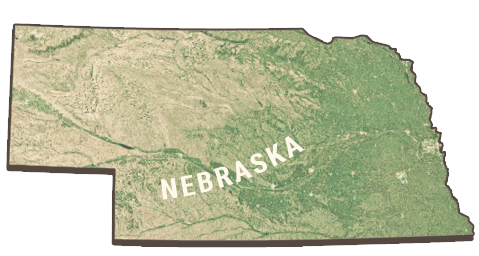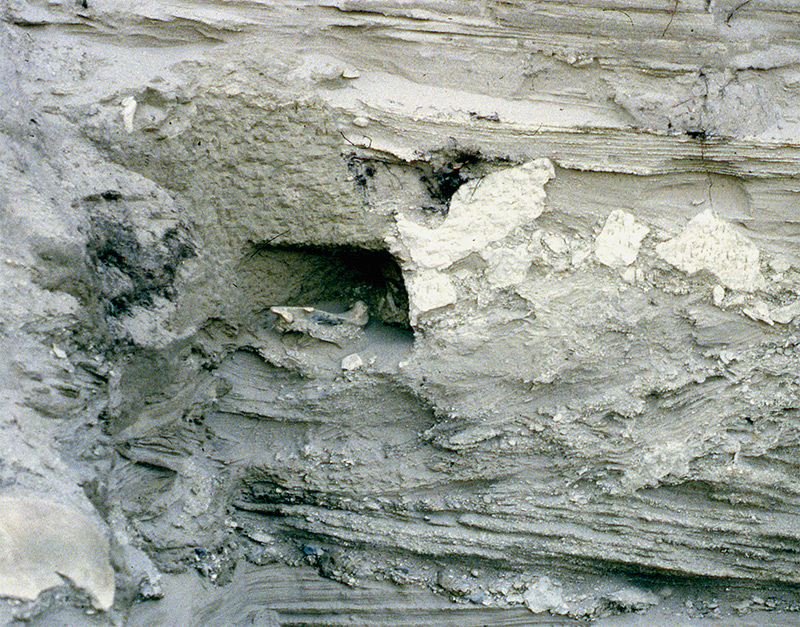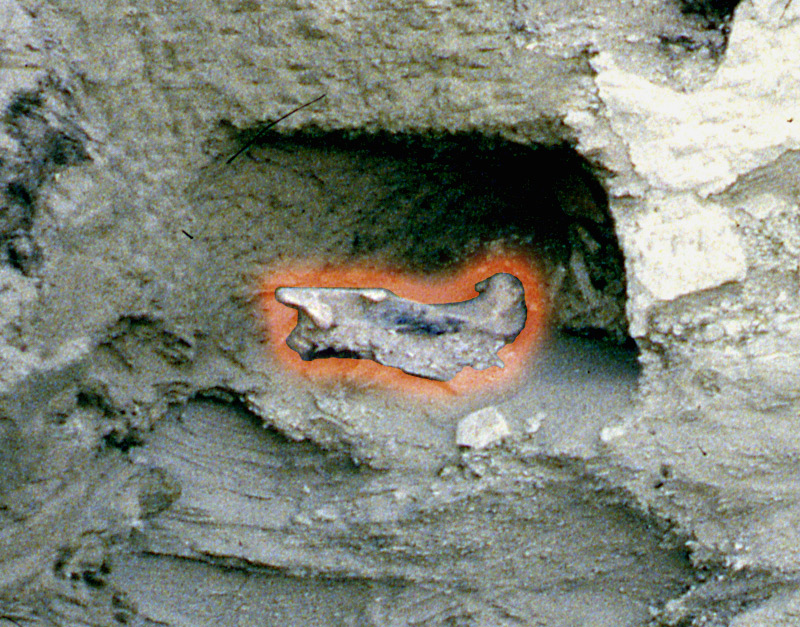
Morris Skinner studied the rocks containing fossils as carefully as he studied the fossils themselves. Paleo sleuth Mike Voorhies paints a striking portrait of Skinner, the paleo sleuth who trained Mike and demonstrated to generations of paleontologists just how much could be learned from a fossil’s context.
Morris F. Skinner embodied a zest for life, a genius for collecting fossils, and a passion for detail that changed the course of paleontology.
Skinner and his friend Jim Quinn found their first major fossil quarry in the canyons of Brown County, Nebraska where the two unearthed an important deposit of rhino bones. Two mounted skeletons of these rhinos are still on display at the University of Nebraska State Museum in Lincoln.
In a matter of six years, Skinner went from amateur fossil sleuth in 1927 to Frick Field Associate in the 1930s. Childs Frick, who developed the Frick Laboratory of Paleontology at the American Museum of Natural History in New York City, quickly recognized Skinner’s talent and drive.
Skinner spent the rest of his life working on the collections in New York during the winter and collecting fossils during the field season, first from Nebraska and then country-wide. His wife, Marie, worked as an assistant in the American Museum as well as in the field, and as his editor and colleague on many of his publications.
Skinner was a friend and mentor to Mike Voorhies, who described him as “the premiere bone hunter of them all.” Skinner discovered dozens of fossil deposits in the course of his career. His finds yielded whole populations, including some species known only by a few random bones prior to his discoveries.
He did more than find the bones—he made stratigraphic sections or “rock pictures” of where they were found, including pinpoint measurements of their locations. He scoured landscapes for anything previous expeditions might have missed, and in doing so found many new fossil sites.
In 1984, Skinner published Tertiary Stratigraphy and the Frick Collection of Fossil Vertebrates of North-Central Nebraska, a publication that set a standard for documenting stratigraphy, geography, and the correlation of fossil sites.
Morris Skinner collected amazing fossil horse specimens and used them to help track the multiple lines of horse evolution in North America.

Skinner's publications on Cenozoic rocks and fossils of Nebraska reveal precisely how to unravel the history locked in complex depositional environments.
Studying the huge collections he helped to build at the American Museum, Skinner devoted his career to detailing the evolutionary relationships of horses in North America.
Skinner's stratigraphic records provided a much-needed model for a detailed system of documenting fossils and sites. He was the first to record this level of associated data, greatly increasing the information to be gleaned from each specimen.
In the half century Skinner worked for the Frick Laboratory of the American Museum of Natural History, he amassed what Mike Voorhies described as “one of the largest and best documented collections of fossil mammals ever assembled for any institution.”
Skinner studied these Pliohippus and Cormohipparion legs (originally discovered by Mike Voorhies). Use the 3D models to see what he saw:
Childs Frick was born into a wealthy family in Pittsburgh, the son of Henry Clay Frick, who made his fortune in coke and steel. As a boy, Childs Frick played in the wooded grounds on his family's estate and developed a great love for animals. He graduated Princeton in 1905. An expedition to Africa to collect big game and bird specimens set him to wondering about the origins of modern species. This interest led him to become a vertebrate paleontologist and a benefactor to the science of paleontology. In 1916, he embarked on his first personal fossil collecting expedition and started his lifelong association with the American Museum of Natural History. He was a patron to the Museum's Department of Paleontology and established the Frick Laboratory. He noticed gaps in the fossil record that were the result of workers ignoring fossils, especially those of Miocene and Pliocene age, according to historian George Corner. Frick “hired his own preparation staff,” wrote Corner, and “the workings of the Frick Lab began!”
In 1931, Frick sent E.H. Barbour $500 for quarry work, allowing the fossils collected to remain the property of the museum, but retaining Frick's right to study carnivore material. A Frick Paleontological Fund was established with the University of Nebraska in 1932. From 1932 to 1963 the Childs Frick Corporation donated $140,000 to University Foundation to fund research grants for the museum’s Vertebrate Paleontology Division.
Using field workers such as Morris Skinner, Frick was able to gather over 200,000 fossil mammal specimens that were eventually donated to the American Museum of Natural History. Frick's major publication and most important work was Horned Ruminants of North America, Bulletin of the American Museum of Natural History, volume 69. This publication was an important contribution to the paleontology of antelope, deer and related mammals. Frick mentioned E. H. Barbour as well as Morris Skinner in his introduction, and he named several of the new species he described after each of them.
For a PDF of this book, visit http://digitallibrary.amnh.org/handle/2246/362


Showing cross-bedded strata at Norden Bridge Quarry. Fossil (Horse femur) left of the boulder about midway up photo, 1983.
Morris Skinner was a systematic explorer, and his careful searches helped him make large collections of some animals. Before Skinner, the creature called the “three horned deer” was only known from a few fragments. He collected a perfect skull, jaws, and a partial skeleton from Devil’s Gulch in 1928. Thanks to Skinner’s many finds, hundreds of species could be studied in detail. You might imagine a paleontologist so thorough and focused to be serious and aloof all the time. But Skinner had a wonderful sense of humor and always shared his time and knowledge unselfishly with students.